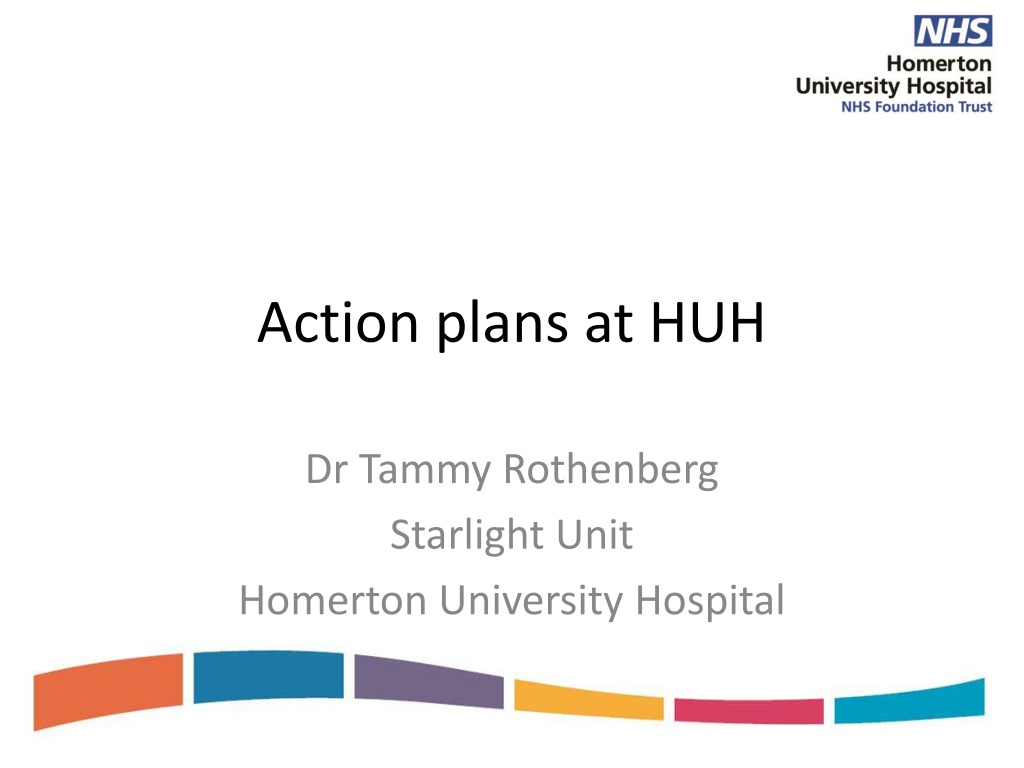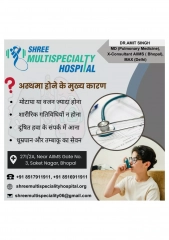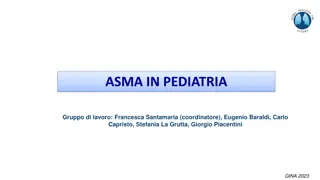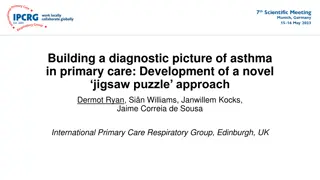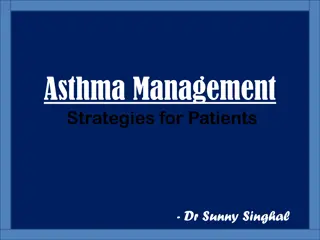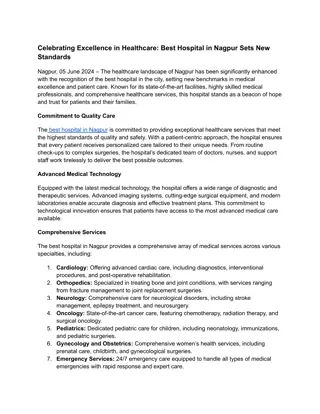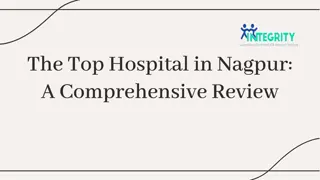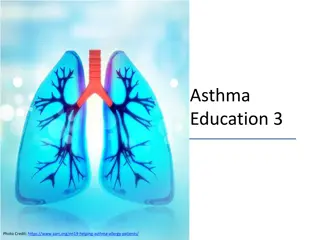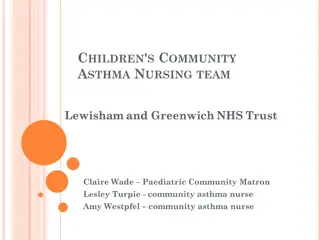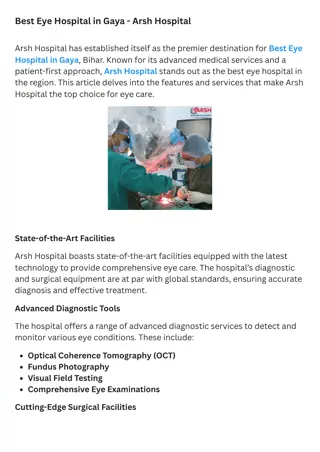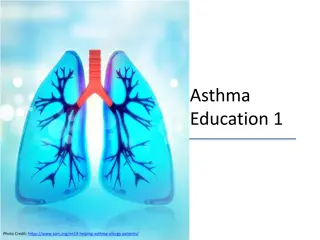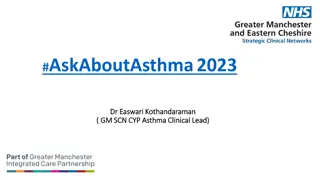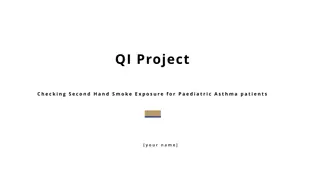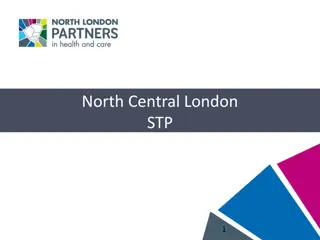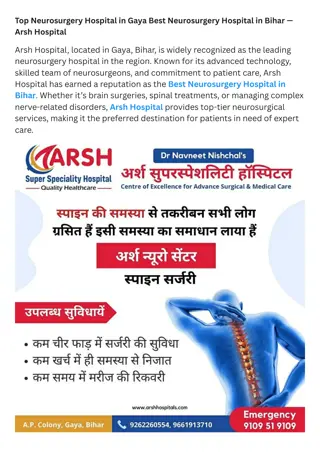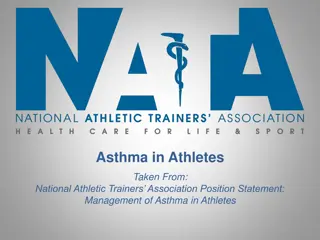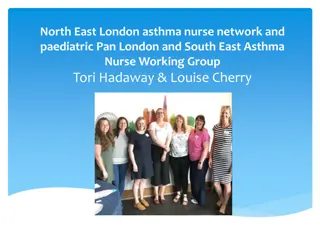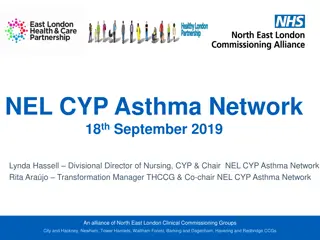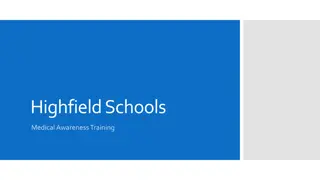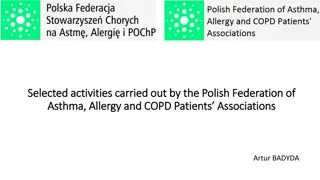Evolution of Asthma Action Plans at Homerton University Hospital
Over the years, Homerton University Hospital has made significant progress in implementing asthma action plans to improve patient care and outcomes. From initial education and adjustments to the nursing checklist to the transition to paperless records, the hospital increased the rate of admissions discharged with action plans to 98% in November 2017. Despite some challenges and resistance faced along the way, continuous efforts and adaptations have led to successful results in asthma management at the hospital.
Download Presentation

Please find below an Image/Link to download the presentation.
The content on the website is provided AS IS for your information and personal use only. It may not be sold, licensed, or shared on other websites without obtaining consent from the author. Download presentation by click this link. If you encounter any issues during the download, it is possible that the publisher has removed the file from their server.
E N D
Presentation Transcript
Action plans at HUH Dr Tammy Rothenberg Starlight Unit Homerton University Hospital
Asthma Action Plans- 2012: rate of action plans 18% June 2013: uploaded the Asthma UK action plans onto the intranet, and started the education regarding the need for this October 2013, the nursing discharge checklist (for all admissions) was adjusted to include wheeze plan
Asthma Action Plans- November 2013: 91% on basis of nursing checklist alone In March 2014, implementation of Action plan generator
Asthma Action Plans- In March 2014, implementation of Action plan generator November 2014 audit: Action plan rate 91%. (using nursing discharge checklist)
Asthma action plans July 2015: paperless records. Includes pre-existing discharge checklist November 2015: our data dipped to 64% ? Eye off the ball due to big change ? Related to measurement method ? those collecting the data did not look at discharge checklist to measure the rate of action plans, but rather, looked for a copy of the action plan. ? Related to change to paperless, less filing 2016: implemented the requirement to copy and paste the action plan into the paperless record , ongoing education
Asthma action plans Nov 2017: the rate of admissions discharged with an action plan was 98%
Resistance to action plan I don t have time I don t think it s worth doing The patient already has one which is up to date We ve run out of paper copies I m not sure which one to use I didn t know enough information to fill it in No one asked me to I thought it was someone else s job I asked someone else to do if for me, didn t they do it? I don t know where to find the paperwork The printer was out of paper
Research Sheares et al (2007) structured interviews with 45 specialist physicians providing patient asthma care in 2 New York City medical centres All 6 doctors in the non-WAAPs group stated that pre- printed plans were not available in their clinic sites and therefore they did not give them to patients, and this difference was statistically significant. 45% of physicians who did use WAAPs stated that time was the major disadvantage to using WAAPs when asked an open-ended question about the disadvantages, 21% stated that patients lose them or forgot that they received them (Sheares et al., 2007)
Cycles of PDSA Zipkin 2013: 4 cycles of PDSA to improve action plans : clinical care coordinator- identify admissions with asthma, help ensure action plans done ( increase 39 to 74%)- role discontinued due to funding but improvement remained ==== culture change integration of electronic action plan into EPR (increase 78-93%)
What did we do? Electronic action plan https://www.rch.org.au/clinicalguide/forms/A sthma_Action_Plan/ Permission from Prof Mike South to adjust it Input from tech-minded trainee Multiple tweaks over time Upload into intranet
What else can be improved? 2012 2017 Written information given at discharge 23 63 Device technique checked 50% 83% Written plan at discharge 18% 98% Advised GP at a week/ 2 days 9% 95%
What else did we do? Keep it simple simple technology, few things to go wrong keep going! Change takes time Keep tweaking Make friends with IT folks
shortcomings Output is not child-centred Output is not based on traffic light system Output does not match GPs or NEL Maintenance requires IT knowledge and IT buy-in from Comms team in hospital
Summary of why it works Culture change: it is the norm Buy-in from 3 sets of health care workers: Developed with the needs of the issuer in mind Nursing staff Medical trainees Medical consultants
Wish list for the future Implement as the norm in A+E as well as the ward Keep input fields simple but output to be child-centred- eg Monkey and Me If you have the tech know-how PLEASE CONTACT ME! Tammy.rothenberg@nhs.net
